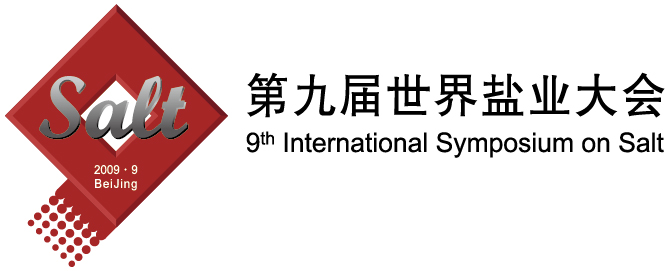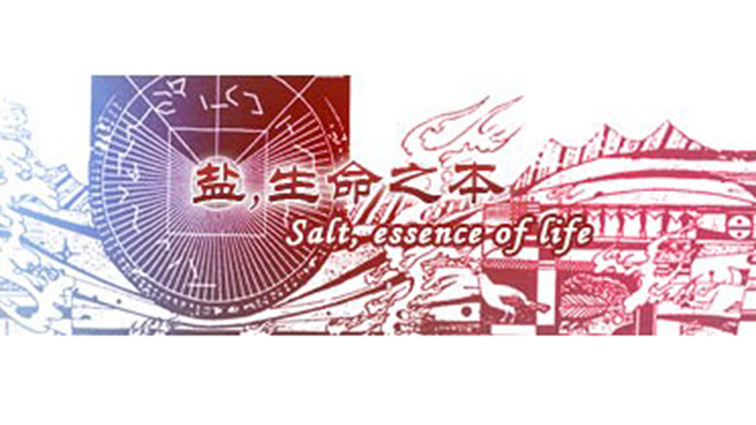
Following Hague (2000) the drums of salt sounded in the Beijing International Conference Centre where the 9th International Symposium on Salt was held last September. It was the ninth in a series of symposia since 1962 when the first meeting held in Cleveland, USA.
Congratulations to China National Salt Industry Corporation and the China Salt Association and, in particular to Messers Mao Qingguo, Du Maohua, Dong Zhihua, and Lin Jiahua and to coordinator Linda Liang for their leadership, talent and hard work to make the event successful.
More than 1200 participants, including 900 delegates, attended the works of the Symposium and the salt related exhibition where exhibitors showcased advanced robotic production systems and other state-of-the-art technology.
The World Symposia on Salt specialize in reporting and discussing progress of the latest development and views of salt industry. They cover the whole spectrum of subjects dealing with the science, engineering, technology, economics and history of all type of salts and other evaporites.
One hundred eighty five (185) papers were presented in six parallel sessions grouped into the following topics:
♦ Vacuum Salt Production and Reduction of Energy Consumption in Salt Production
♦ Rock Salt Production and Utilization
♦ Sea/Lake Salt and Biology
♦ Salt Chemical Production
♦ Salt Culture, History and Education
♦ Salt and Health
♦ Salt Processing and Quality Assurance
♦ Iodized Salt for IDD Elimination
♦ Salt Marketing
The 9th International Symposium on Salt demonstrated that the study of microbial processes in saline waters such as saline lakes, coastal wetlands and solar saltworks is a very active area of research worldwide.
More than twenty presentations were related to biological process of Solar Saltworks and their Ecological Importance, among 75 presentations that were dedicated to Solar Saltworks. Especially the participants of the CEISSA 2006 and CEISSA 2009 (held in Santorini, Hellas and Merida, Mexico respectively) had a strong presence and contributed for the success of Beijing symposium:
Professor Steve Davis presented an overview of the structure and function of biological systems that help or harm salt manufacture and addressed the requirements to establish and maintain helpful biological systems in solar saltworks.
Professor Aharon Oren in search for the “missing link” between saltworks biology and solar salt quality, provided a survey of organic chemicals known to be produced by different members of microbial communities in saltern ponds and proposed a new theory suggesting that proteins released during lysis of pond microorganisms and especially of the Red Halophilic Archaea, may at least in part, be responsible for poor solar salt quality production.
Professor Carol Litchfield presented an integrated historical and technical study on the slat production in the Turks and Caicos Islands in relation with the US tariff policy.
Mr. Nikolaos Korovessis outlined the unique coastal ecosystems that developed in parallel with the Solar Saltworks production process evolution and compared the wetland function of Solar Saltworks with the natural coastal saline ecosystems.
Mr. Renato de Mendeiros Rocha informed the salt community that the Brazilian saltworks invested in environmental education. The relative courses are developed with a target audience composed of leaders, managers and technicians along with civil servants of the salt. Following that program the legal requirements of actions in this new axis of surveillance and environmental control of companies, environmental education courses in hyper saline environments began to appear on the pre-requisite list of the state environmental agency (IDEMA) to issue the license to operate any company for salt production. These results suggest the need for expansion of activities in environmental education in solar saltworks worldwide.
Mr. Vladimir Sedivy examined the nature of impurities in salt and explained the unit operations employed in the hydro-mechanical salt processes.
Mr. Sergio Ortiz Milan (with co-author Steve Davis) referred to the behaviour of the detrimental microorganisms for the solar salt production. He reported to an applied to ISYSA control program of inoculation, evaluation and handling of Artemia in order to retain a helpful biological process and produce optimum quality solar salt.
Professor
Professor Abdul Rahaman investigated the influence of Halophilic bacteria distribution in the formation of large salt crystals and in the rate of salt crystallization.
Mr. R. Venkat referred to biological management of three Solar Saltworks owned by Krystalline Salt Ltd. Kenya and reported the differences of the developed biological process in each saltworks.
Mr. Xin Nai-hong reported on the biotechnology resources of solar saltworks pond and presented a review of the current research trends and application of Artemia.
Mr. Wen Huai-ke proposed strategies for the environmemental protection and sustainable development Qinghai salt lake.
Professor A.M. Wali referred to the economic possibility of extracting some valuable salts as sodium borates, boric acid, and potassium chloride from the waste residual brines (EMISAL Co., Egypt) and its economic utilization in local markets.
Mr. Diogenes Costa presented implemented methods and models of environmental recovery in ecosystems of mangroves associated with salt production in Brazilian solar saltworks.
Mr. Cui Zhiqiang described the mass cultivation techniques and commercial application of Dunaliella and discussed the prospect of the natural carotene industry.
Professor He Hua presented a study that recorded the species composition and distribution of phytoplankton and zooplankton in Tanggu Saltworks, China and concluded that the developed biological system is on the way to imbalance.
Mr. Mark Coleman reported a technique to determine the metabolic production and reduction of oxygen by the benthic community in solar saltworks ponds.


